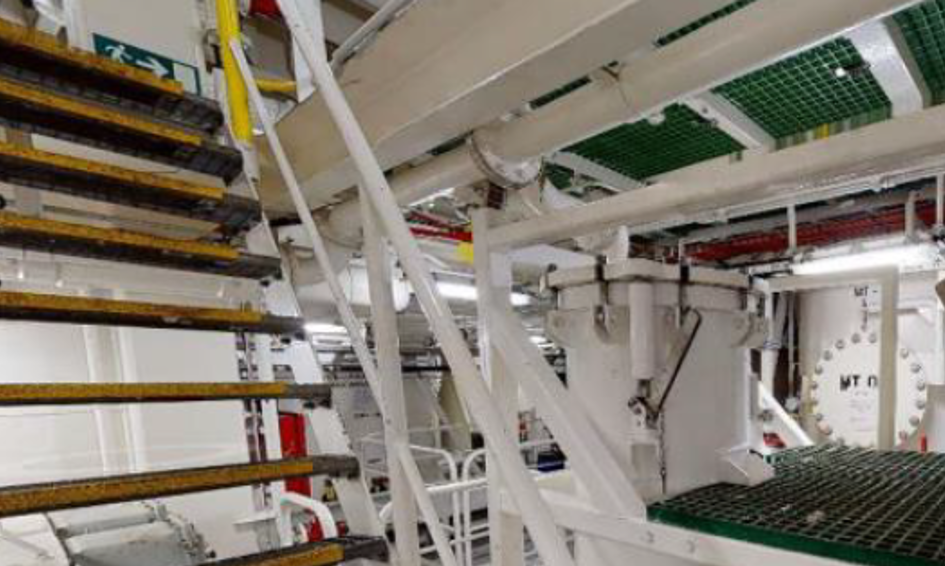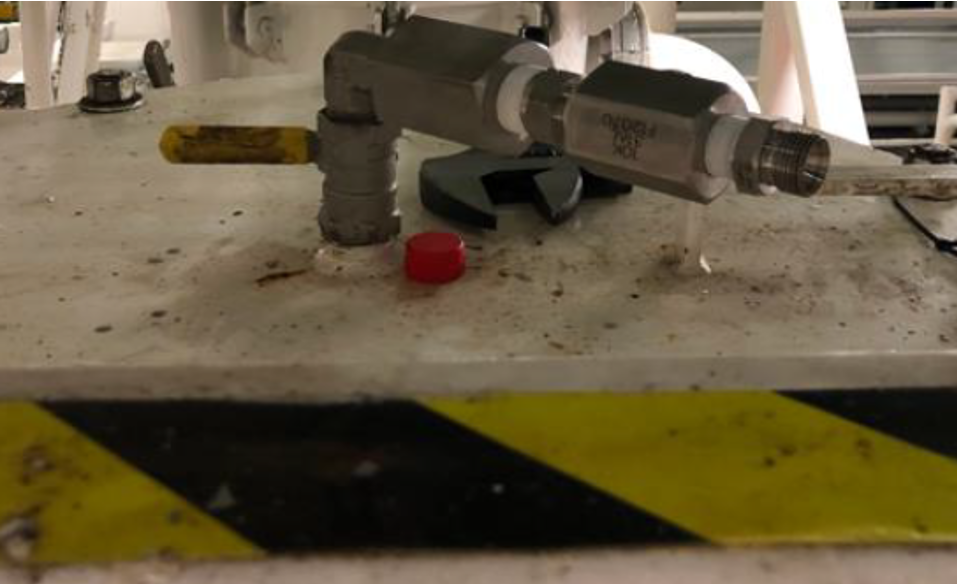Personnel exposed to hydrogen sulphide during maintenance
What happened
Subcontractor personnel were exposed to a high concentration of Hydrogen sulphide (H₂S) for a short period during maintenance work in a vessel’s Well Treatment System (WTS) room. The incident occurred during annual maintenance work being conducted on the system’s acid filter units. When the upper vent valve on an acid filter unit was opened, the subcontractor supervisor noted a pressure release from the system and a strong smell. The valve was immediately closed, an “All Stop” called, the extraction fan unit turned on and the team exited the room (no alarms were activated).
The subcontractor supervisor notified the company supervisor, who started to suspend the Permit To Work. During this period, the subcontractor supervisor made the decision to re-enter the room and open the acid filter vent slightly to check for pressure. At this point, the supervisor’s personal H₂S alarm sounded and highlighted the presence of H₂S at high concentration (357ppm), and the vessel H₂S alarm in the WTS room also sounded. Personnel evacuated the room and work was suspended. No personnel showed any symptoms nor suffered any adverse health effects.


What went right
- The vessel’s H₂S alarm activated in the incident area;
- There was a good discussion and agreements with all parties on the bridge following vessel H₂S alarm;
- Once all parties had been made aware, the correct response was put in place to ensure situation was brought under control.
What went wrong – what actually happened
- There was an unexpected pressure release when the vent valve was opened on acid filter unit;
- The “All Stop” did not work as intended – there was further uncontrolled action without appropriate consultation and assessment, and this led to exposure to H₂S.
- The subcontractor returned to work area after All Stop had been called.
What should have happened?
- Safe completion of annual maintenance work with no potential for H₂S release because the system had been flushed with fresh water after last use.
What was a surprise?
- The system’s pressure gauges had been broken for a long time and not fixed or replaced;
- Despite system being flushed and inspected after last project use, low lying water/chemical residue in the system allowed H₂S to form;
Actions
- Be aware of any potential sources of H₂S at your worksite, specifically when working with chemical, sewage or seawater systems;
- Ensure that all personnel who might be involved fully understand the dangers of Hydrogen Sulphide;
- Clearly mark any areas that have been identified as a potential source of H₂S with warning signs;
- If anyone becomes aware of a potential H₂S release, STOP work, leave the area and report the situation immediately. Do not return to the area until it is proven to be safe.
Members may wish to refer to:
Safety Event
Published: 18 June 2024
Download: IMCA SF 12/24
IMCA Safety Flashes
Submit a Report
IMCA Safety Flashes summarise key safety matters and incidents, allowing lessons to be more easily learnt for the benefit of all. The effectiveness of the IMCA Safety Flash system depends on Members sharing information and so avoiding repeat incidents. Please consider adding [email protected] to your internal distribution list for safety alerts or manually submitting information on incidents you consider may be relevant. All information is anonymised or sanitised, as appropriate.
IMCA’s store terms and conditions (https://www.imca-int.com/legal-notices/terms/) apply to all downloads from IMCA’s website, including this document.
IMCA makes every effort to ensure the accuracy and reliability of the data contained in the documents it publishes, but IMCA shall not be liable for any guidance and/or recommendation and/or statement herein contained. The information contained in this document does not fulfil or replace any individual’s or Member's legal, regulatory or other duties or obligations in respect of their operations. Individuals and Members remain solely responsible for the safe, lawful and proper conduct of their operations.
